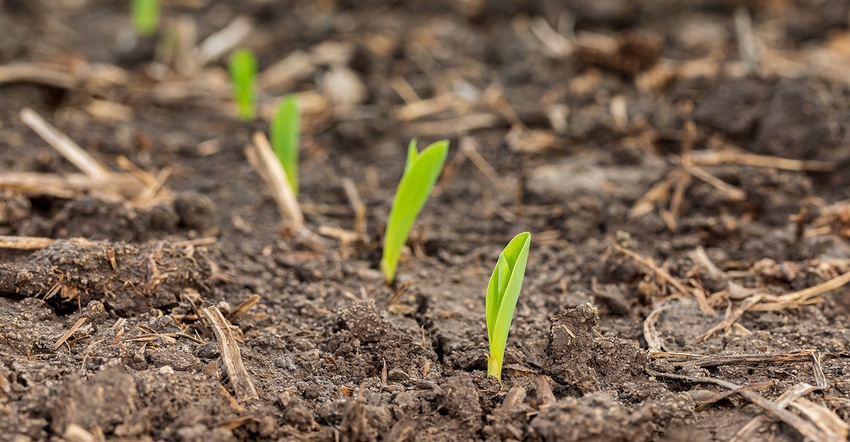
USDA’s latest crop progress report, out Monday afternoon and covering the week through May 1, showed further evidence that the 2022 season is already facing a variety of challenges. Rainy weather that has plagued the Midwest in recent weeks has slowed corn and soybean plantings noticeably. Both crops made some progress this past week but remain well below historical averages. And rains in the Plains have landed on drought-parched soils there but failed to move winter wheat crop quality higher in today’s report.
Corn plantings reached 14% completion through Sunday, up from 7% a week ago. Analysts were expecting to see more progress and had offered an average trade guess of 16%. More concerning, this year’s start is much slower than last year’s pace of 41% and the prior five-year average of 33%. Two of the top 18 production states have still yet to see any measurable progress, according to USDA – Minnesota and North Dakota.
Corn emergence reached 3%, up from 2% a week ago but behind last year’s pace of 7% and the prior five-year average of 6%. Southern states Texas (62%), North Carolina (56%) and Tennessee (10%) continue to lead the charge in this category.
Soybean plantings made it to 8%, up from 3% a week ago and matching analyst expectations. Progress is still sluggish compared to last year’s pace of 22% and the prior five-year average of 13%, however. As with corn plantings, Minnesota and North Dakota are not yet officially “on the board” for USDA’s progress updates. Louisiana (59%) and Mississippi (48%) are the furthest along so far.
Analysts had hoped USDA would increase winter wheat crop quality a point higher this week, but the agency held ratings steady at 27% in good-to-excellent condition. The last time crop quality was this low in early May was 1989. Another 30% is rated fair (down four points from a week ago), with the remaining 43% rated poor or very poor (up four points from last week).
Physiologically, 23% of the crop is now headed, up from 11% a week ago. That’s behind both 2021’s pace of 26% and the prior five-year average of 29%.
Spring wheat plantings reached 19% through Sunday, up from 13% a week ago. That’s much slower than last year’s pace of 46% and moderately behind the prior five-year average of 28%. Five percent of the crop is emerged.
Click here to learn more about the latest USDA crop progress report, including the agency’s observations on days suitable for fieldwork and topsoil moisture conditions.
About the Author(s)
You May Also Like






